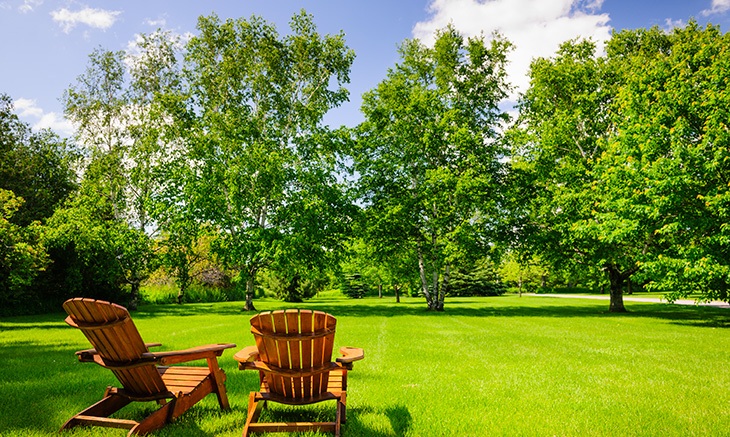
Summer is nearly here, and the trees have filled out, giving soothing shade from sunlight and privacy out of nosey neighbors.
But wait. Why would you tree appear little and puny and yet another does not have any leaves?
You do not need to have a diploma in horticulture to develop healthy, strong trees or know that the tell-tale signals a tree could be expiring or (yikes) currently deceased.
Below are a few suggestions on growing healthy trees quicker and understanding when it is time to get rid of a tree that is dead.
How do I create my trees grow faster?
Step one, naturally, would be to plant a tree, but you want to be certain that you look after the tree correctly to give it the best chance of growing large and powerful.
Here are a few tips to assist your brand-new trees grow quicker so you are able to enjoy their color and beauty earlier:
- Stop hitting your trees.
Like people, trees are living organisms; every time that the bark of a tree is hurt it impacts the tree’s health
- Offer your trees distance.
When planting trees, then be certain that you dig out three or more feet away in the back. This guarantees the tree’s plant workers cannot steal away the vital nutrients its roots will need to grow. And include some mulch to make a protective border to help stop #1 away from occurring.
- Root, root, root for your tree.
To grow large and powerful, trees want healthy root programs to pull water and nutrients in the ground. This usually means that you need good dirt.
As a bonus, promote root growth by employing a fertilizer which comprises a root stimulator hormone to present your trees that additional “boost” they will need to flourish.
So now you’ve got the know-how to develop beautiful, healthy fresh trees, however, what about the previous ones who have seen better days?
How do I tell if my tree is dying or dead?
Just as a tree gets little to no leaves does not necessarily indicate it’s dying.
- Bend Test: Locate a few tiny branches around the tree and then bend them. Should they snap fast, without first bending, then the branches are still dead.
- Scratch Evaluation: Scratch off a tiny section of this outer coating of bark from the trunk of this tree. When there’s a green coating beneath, the tree remains alive; whether it is dry and brown, it is dead.
- If the back of the tree has segments where there’s not any bark, then this could indicate that your tree is expiring.
- Fungus Growing: If your tree has big fungus growing on the back, then it might be a indication of internal rust.
Can a tree with multiple trunks have only one dead section?
Yes. Trees with lots of trunks, such as Crape Myrtle or River Birch, might have a single backward expire while others stay healthy. In cases like this, eliminate the dead segments of the tree without cutting to the wholesome trunks.
Why is it important to get rid of dead trees?
When a tree is dead or dying it’s more inclined to fall over during a storm or at strong wind. Based upon how big this shrub, it might cause considerable damage to the surrounding place.
What happens if I blow off a dying or dead tree?
It is particularly important to get rid of dead trees ASAP if they have any possibility of damaging your neighbor’s property. Remember, dead branches may collapse without warning.
How do I tell if my tree is dead or diseased?
Diseases can negatively affect trees and finally kill them. Root rot is a frequent tree disorder that’s hard to detect. Without large roots to maintain it at the floor, a tree could collapse without warning or blow over in a strong breeze.
The best way to Discover tree disorder
If you believe that your tree is in trouble, it is ideal to get help from a tree specialist.
